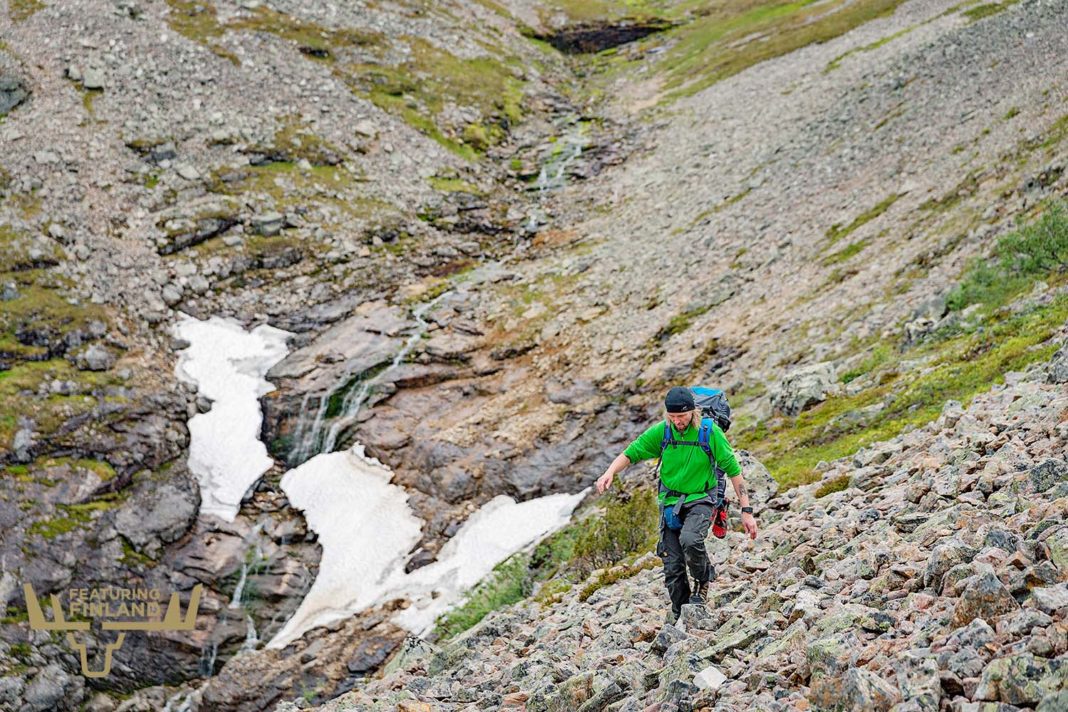
Finland’s best trekking trails can be found in the north, in the national parks of Lapland and Kuusamo. Of course, there are great outdoor destinations in Southern Finland as well, but their trails are better suited for easy day hikes than for multi-day wilderness adventures.
This article introduces three of Finland’s most legendary trekking trails. Hiking them takes 3-5 days depending on the hiker’s physical condition, weather conditions and season. At the end of the article, there are tips on what equipment to pack for a trek in a Finnish national park.
The best time to hike in the wilderness of Northern Finland is July-October. Our favorite time to hike in Lapland is mid-September, when the landscape glows with the colors of autumn and thanks to cold nights annoying mosquitoes have disappeared. In wintertime, trekking in wilderness is recommended only for experienced hikers.
Read more: Best time to visit Finland – the four seasons
Karhunkierros – the most popular trek in Finland
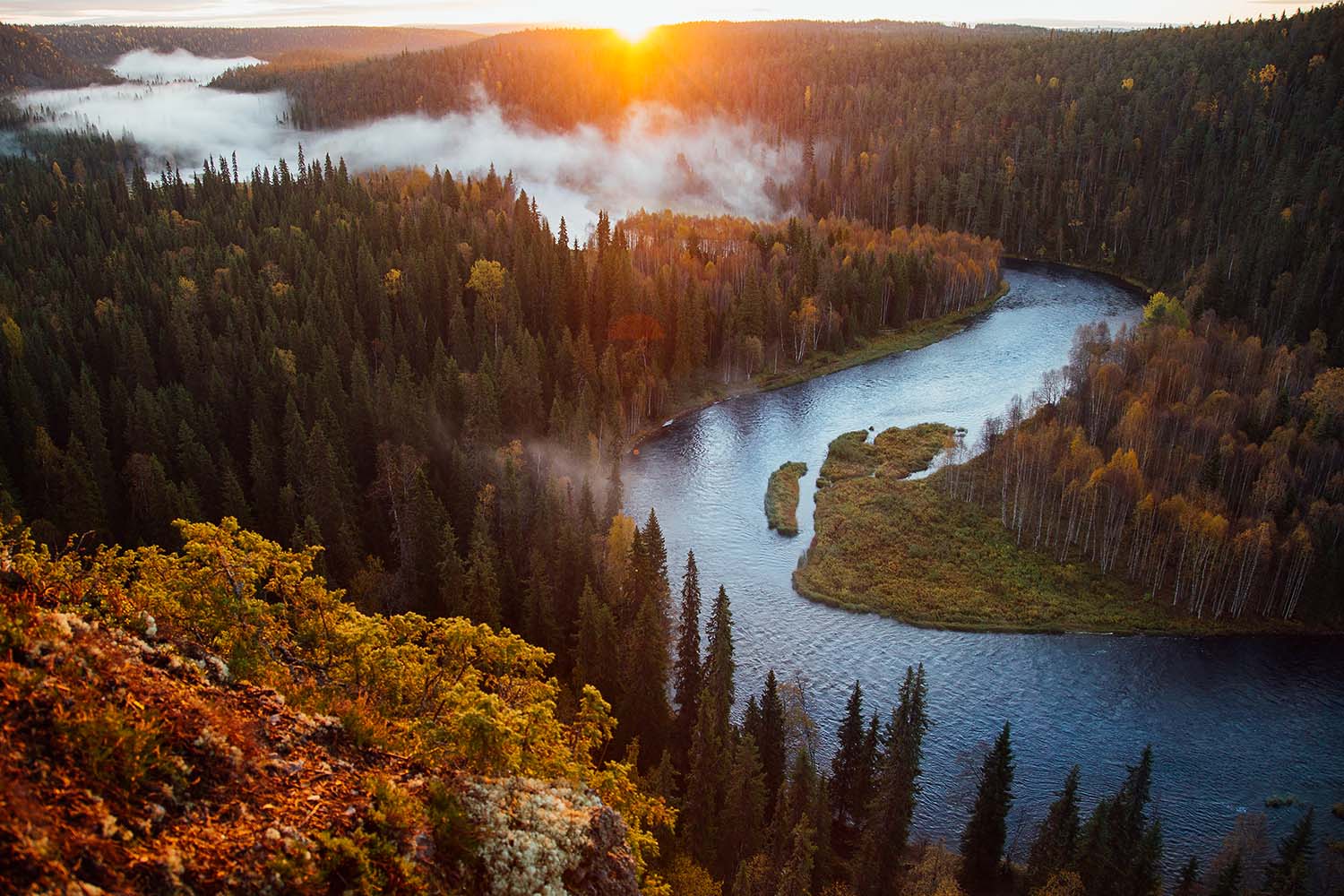
Karhunkierros (Bear’s Ring), which runs along the eastern border of Finland in Oulanka National Park, is Finland’s most popular hiking trail. Highlights of the route passing through uninhabited and wild forests include the roaring waterfalls of Jyrävä and Kiutaköngäs, as well as the Ristikallio Lookout and Oulanka Canyon.
Hiking the Bear’s Ring takes 3-7 days, depending on the physical condition and hurry of the hiker. Thanks to the excellent camping structures, the Bear’s Ring is suitable for almost anybody. You can sleep for free in wilderness huts along the way, but you should also bring a tent in case it gets too crowded. Along the route there are kiosks and cafes where you can buy supplies.
The Bear’s Ring is moderately difficult: along the 80-kilometer trail there are many steep and rocky uphills and downhills. The route is clearly marked on the terrain, so there is no risk of getting lost.
The best time to hike the Bear’s Ring is from early June to mid-October. The trail can be dangerously icy and slippery in early spring and late autumn.
You can reach the Bear’s Ring from Ruka Ski Resort by taxi or by Karhunkierros Bus.
Hetta-Pallas – authentic Lappish landscape
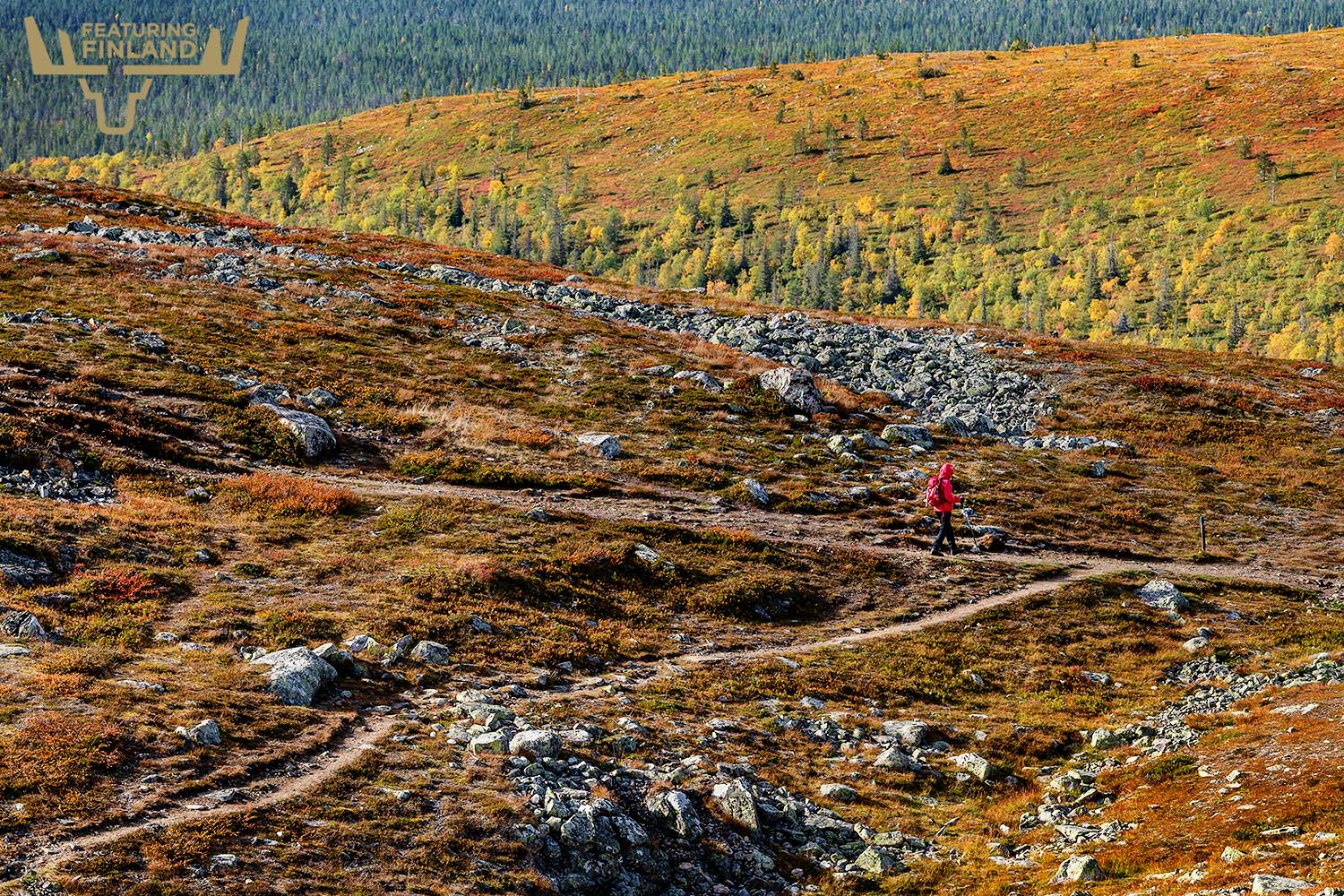
Pallas-Yllästunturi, located in Western Lapland, is the most visited national park in Finland. Most visitors drop by the hiking trails (or ski tracks) for just a day, but some head for the 55-kilometer trekking route between Hetta and Pallas. The marked path meanders over treeless fells and passes by gorges and wild forests. This is the landscape of Lapland at its most authentic!
There are many wilderness huts and reservation huts along Hetta-Pallas, so the duration of the hike can be decided at will. Usually Hetta-Pallas takes 3-4 days, but one of my friends hiked the whole route in just two days! There was no masochism involved: he was packing a down pillow and a bottle of red wine to accompany his dinner pasta.
Due to the melting waters of the snow, the best time for the Hetta-Pallas trek is from Midsummer to October. The most beautiful time, of course, is the autumn. During the mosquito season in July, it is worth remembering the mosquito repellent.
Usually the trek begins in the small village of Hetta, where hikers get a boat ride across Lake Ounasjärvi. If you arrive by car, it’s possible to order a car transfer between Hetta and Pallas.
Hetta has accommodation (including the Hetta Hotel), restaurants, a grocery store and the Fell-Lapland Nature Center. At the end of the hike you can stay in style in Finland’s first fell hotel, Lapland Hotels Pallas.
Urho Kekkonen National Park – real wilderness

Urho Kekkonen National Park, located in Eastern Lapland, is one of Finland’s most diverse hiking destinations. The vast wilderness offers treeless fells and open bogs, duckboards and stone fields, as well as an excellent network of paths and wilderness huts.
The gem of Urho Kekkonen National Park is Luirojärvi Lake. It’s located in the heart of the national park, at the foot of the highest fell, Sokosti (718 meters above sea level).
There are no official marked routes to Lake Luirojärvi, although many trails are clear and easy to follow. Nevertheless, in Urho Kekkonen National Park orienteering skills are essential.
One of the most popular hiking trails to Luirojärvi starts from Kiilopää Fell Center, about 15 kilometers south from the Saariselkä ski resort. It usually takes 5-7 days to get around the ring route. Along the way there are wilderness huts and reservation huts, campfire sites, lean-to shelters and dry toilets.
The Luirojärvi wilderness and reservation hut with its lakeside sauna is such a wonderful resting place that many hikers spend two nights there. From the lake it’s only a few kilometers hike to the top of Sokosti, so climbing the highest hill in the national park (without a heavy backpack) is a great day excursion.
Luirojärvi’s huge wilderness and reservation hut can accommodate more than 30 guests. The place is popular, but you don’t always have to suffer from crowds: when I stayed at Lake Luirojärvi in early August, there were only a few other hikers.
Instead of returning back to Kiilopää it’s possible to continue north towards the Suomujoki River. Nature wonders along the way include Paradise Gorge, a canyon worthy its name.
There are other recommended trails in Urho Kekkonen National Park, such as a hike to Santa Claus’ original home Korvatunturi fell, as well as a 40-kilometer ring route around Nuorttijoki River.
Finland’s best wilderness areas
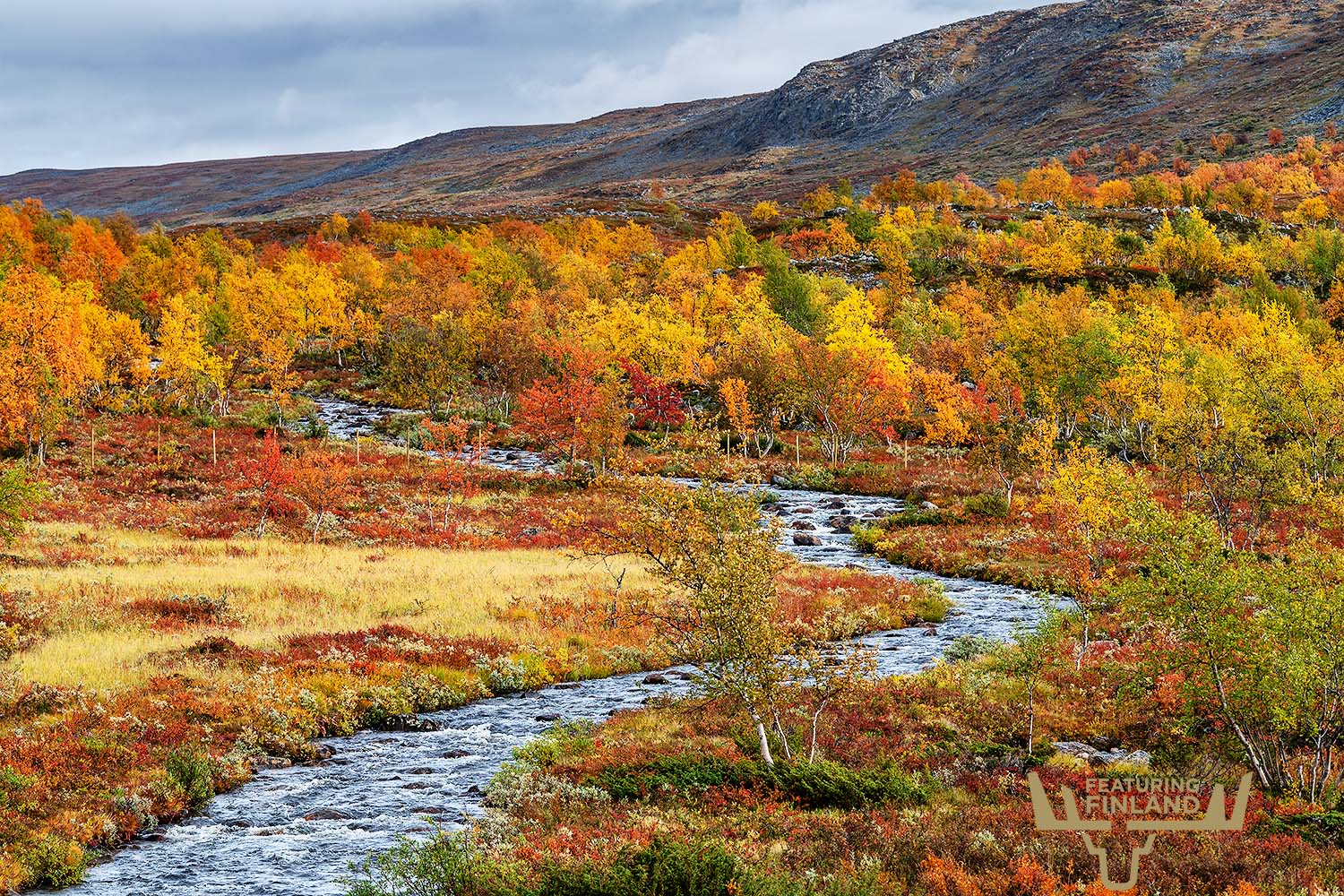
Finland’s most popular hiking trails can be crowded during the peak seasons, especially in September. Fortunately, for most of the year trails are nearly empty.
It is worth exploring the map when choosing a trekking destination: the fewer services for hikers (wilderness huts, leant-to shelters, marked trail), the fewer visitors.
If you are a loner and want to wander far away from other people – and you have the necessary gear and know how to use it – head to Tsarmitunturi, Vätsäri or the largest national park of Finland, Lemmenjoki. All three are places where you can hike for a week or two outside of the marked trails.
Read more: Lapland – Epic Outdoor Experiences in Northern Finland
Equipment for trekking in Lapland

On a multi-day trek both equipment and outdoor skills must be in order. One should not go to the fells of Lapland without knowing how to pitch a tent in windy conditions or how to light a campfire with wet wood.
Some of the trails in the national parks are well marked, but never go hiking without a map and compass. Don’t rely only on mobile phone map applications, because your battery can die, phone break, or simply there’s no coverage. Pack a camping stove, first aid kit and proper hiking boots. Feather-light Crocs sandals are great for wearing in the camp and wading across streams.
Finnish wilderness huts

Most national parks in Finland have free wilderness huts. They are simple cabins with wood stoves, gas cookers and bunk beds. Outside is a dry toilet, a campfire site and a firewood shed with an ax and saw. Drinking water is carried from a lake or stream.
Sometimes – especially in the autumn colors season in September – the wilderness huts get quite crowded, so you should pack your own tent just in case. Bring also earplugs – there’s always a snorer. If there are a lot of people in the wilderness hut, sleeping in your own tent is often much more comfortable. Still, the hut can be used for cooking and dining, especially if the weather is bad.
A maximum of two nights can be spent in a wilderness hut. Remember the rule of thumb: always make room for a newcomer. In other words, space must be made for the last person to arrive – even at your own expense!
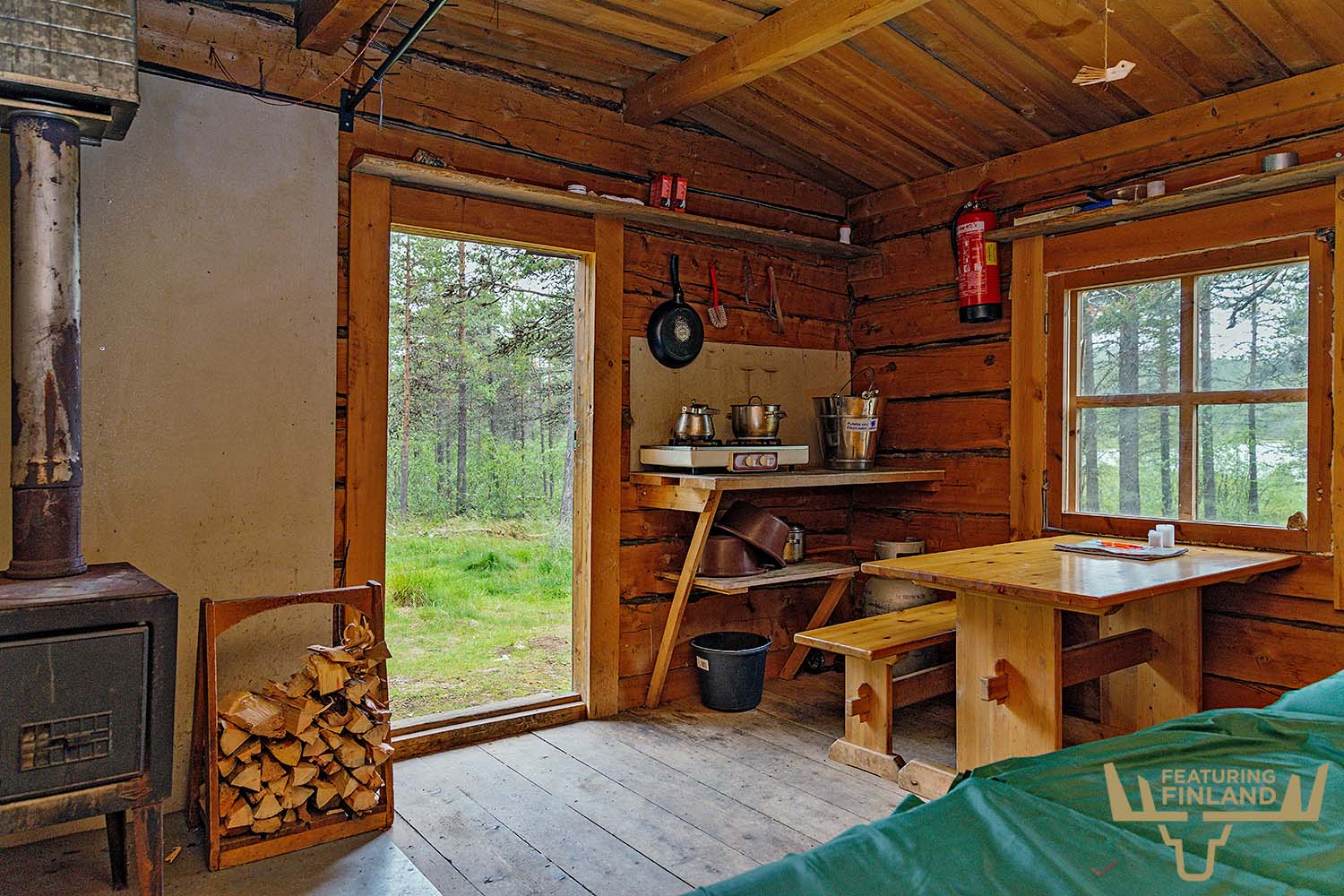
Wilderness huts are completely free of charge, and it’s not possible to make any reservations. There are also paid reservation huts on the hiking trails, which, as the name implies, are booked in advance. A bed costs only 12-15 euros per night. Often the same building has two parts: the wilderness hut is open to everyone, the reservation hut only for those who have paid for their bed in advance.
The price of a reservation hut includes a mattress and pillow, and usually there are pots and other cooking utensils, too. A hiker staying in a reservation can therefore travel with a remarkably light backpack, because there is no need to carry a tent, sleeping mattress or even a camping stove.
Finland’s best trekking trails on the map
The map below has the best national parks in Finland, and many other recommended outdoor attractions like best day hikes, wildlife safaris, fishing spots and canoeing routes.
Did you like this article? If you’re planning a trip to Finland, please book your hotel or rent a cabin or rental car by clicking on our affiliate links. We get a small commission, but you don’t pay any extra. Thanks for your support!






